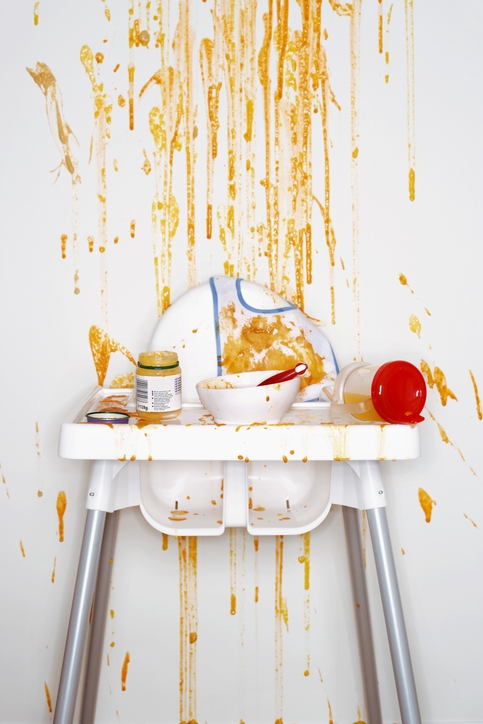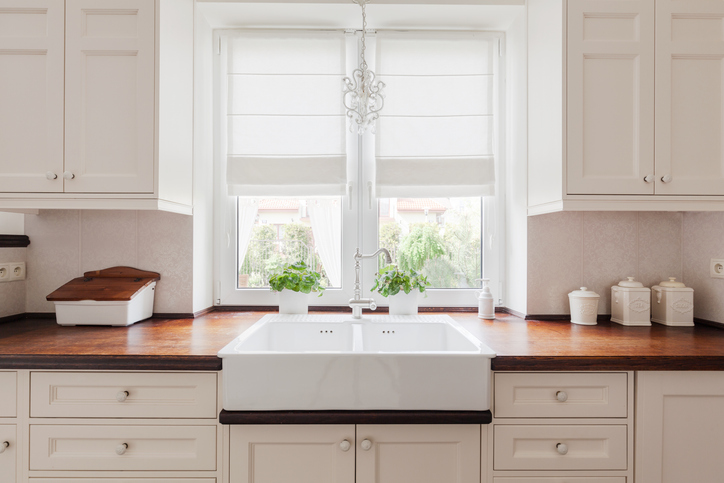Using stain-resistant paint in your kitchen is a smart way to keep it cleaner and more attractive. Kitchens are high-traffic areas prone to spills, splatters, and grease stains. Stain-resistant paint provides a durable and easy-to-clean surface. This article will explain the benefits of using stain-resistant paint in your kitchen and how it helps keep the space spotless.
What is Stain-Resistant Paint?
Stain-resistant paint is a type of paint designed to repel stains and make cleaning easier. It contains special additives that create a protective barrier on the surface. This barrier prevents liquids, grease, and dirt from penetrating the paint. These benefits allow you to wipe away messes without leaving a mark.
These paints are ideal for areas prone to spills and stains, such as kitchens and bathrooms. They are available in various finishes, including matte, satin, and gloss. The paint not only keeps your walls looking fresh but also extends the time between repainting.
Benefits of Using Stain-Resistant Paint in the Kitchen
Using stain-resistant paint in your kitchen offers many benefits. Here are some key advantages:
- Easy Cleaning: Stain-resistant paint makes it simple to wipe away spills and splatters. Grease, sauces, and other messes can be cleaned quickly with a damp cloth,
- Durability: This type of paint is designed to withstand heavy use. It resists chipping and peeling, which is ideal for high-traffic areas like the kitchen. The durable finish ensures your walls stay looking fresh for longer.
- Maintains Appearance: Stain-resistant paint helps keep your kitchen bright and clean. It prevents stains from setting in, so your walls look new even after frequent cooking and cleaning.
- Reduces Maintenance: With stain-resistant paint, you spend less time scrubbing and more time enjoying your kitchen. This reduces the need for frequent repainting and touch-ups, saving you effort and money in the long run.
- Healthier Environment: By preventing mold and mildew growth, stain-resistant paint contributes to a healthier kitchen environment. This is especially important in areas where moisture and humidity are common.
- Variety of Finishes: Available in various finishes, stain-resistant paint allows you to choose the look that best suits your kitchen’s style. Whether you prefer a matte, satin, or glossy finish, you can find a stain-resistant option that matches your decor.
How Stain-Resistant Paint Works
Stain-resistant paint works through a combination of chemical additives and advanced paint technology. The key to its effectiveness lies in the formulation of the paint. Manufacturers add special compounds known as surfactants and binders to the paint mix. These compounds create a barrier on the painted surface that repels liquids and dirt.
Surfactants reduce the surface tension of the paint, making it less likely for substances to stick. This means that when a spill occurs, the liquid forms beads on the surface rather than spreading out and soaking in.
Binders in the paint are polymers that form a strong, cohesive film once the paint dries. This film is tough and durable, capable of withstanding scrubbing and cleaning without breaking down.
Another important component of stain-resistant paint is the presence of anti-microbial agents. These agents inhibit the growth of mold and mildew on the painted surface. This is especially important in humid areas like kitchens, where moisture can promote the growth of these organisms.
Tips for Choosing the Right Stain-Resistant Paint
Choosing the right stain-resistant paint is important for keeping your kitchen clean and looking good. Below are some tips to help you make the best choice:
1. Consider the Finish
The finish of the paint affects both its appearance and durability. Glossy and semi-gloss finishes are more resistant to stains and easier to clean. They reflect more light, which can brighten up your kitchen. However, they might highlight imperfections on the walls.
Matte and eggshell finishes provide a softer look and can hide imperfections better. While they are slightly less resistant to stains than glossy finishes, modern formulations still offer good protection. Choose the finish that balances durability and aesthetics for your kitchen.
2. Check the Ingredients
Look for paints with high-quality binders and surfactants. These ingredients create a durable, stain-resistant barrier on the surface. Some paints also include anti-microbial agents to prevent mold and mildew growth. This is particularly useful in kitchens where moisture is common.
Avoid paints with high levels of volatile organic compounds (VOCs). Low-VOC or zero-VOC paints are better for indoor air quality.
3. Test the Color
Before buying large quantities, test the color on a small section of your kitchen wall. Colors can look different under various lighting conditions. This helps you see how the paint interacts with your kitchen’s lighting and other elements.
Many stores offer small sample pots or swatches. Use these to compare a few colors in your actual kitchen environment. This step ensures you choose a color you’ll be happy with once the entire room is painted.
4. Read Reviews and Ratings
Customer reviews and ratings provide valuable insights into a paint’s performance. Look for feedback on ease of application, durability, and stain resistance. Reviews from other homeowners can help you identify potential issues or benefits.
Visit websites of home improvement stores or online retailers to read reviews. Pay attention to comments about how the paint holds up over time and how easy it is to clean. This information helps you choose a reliable product.
5. Consider the Brand
Reputable brands often offer higher-quality products. Brands like Sherwin-Williams, Benjamin Moore, and Behr have strong reputations for producing durable and reliable paints. Choosing a well-known brand can give you confidence in the product’s performance.
Research different brands and compare their stain-resistant paint options. Check if they offer warranties or satisfaction guarantees. This ensures you’re investing in a product that will meet your expectations and keep your kitchen looking great.
Application Process
Applying stain-resistant paint correctly is essential if you want to get the best results for the walls of your kitchen. Follow these steps to produce a smooth and durable finish:
- Prepare the Surface: Start by cleaning the walls thoroughly to remove any dirt, grease, or dust. Use a mild detergent and water, then rinse and let dry completely. Sand any rough areas and fill in cracks or holes with a suitable filler.
- Apply Primer: If necessary, apply a primer to the walls. Primer helps the paint adhere better and provides a uniform base. Choose a primer that matches the type of paint you are using and allow it to dry completely before painting.
- Stir the Paint: Stir the stain-resistant paint thoroughly before use. This ensures that the additives and pigments are evenly distributed for consistent color and performance.
- Cut in Edges: Use a brush to cut in around the edges of the room. Paint along the corners, trim, and ceiling line where a roller cannot reach. This creates a clean border for rolling the larger areas.
- Roll the Paint: Use a high-quality roller to apply the paint to the larger surfaces. Work in small sections and use a “W” or “M” pattern to spread the paint evenly. Apply thin, even coats and allow each coat to dry completely before applying the next.
- Inspect and Touch Up: After the final coat has dried, inspect the walls for any missed spots or imperfections. Touch up these areas with a brush or roller to ensure a uniform finish.
- Clean Up: Clean your brushes and rollers immediately after painting. Use soap and water for latex-based paints and mineral spirits for oil-based paints. Proper cleaning extends the life of your tools and keeps them ready for future projects.
- Ventilate the Area: Ensure good ventilation in the painted area until the paint is fully dry. This helps to remove any lingering fumes and speeds up the drying process.
Maintenance Tips for Stain-Resistant Painted Surfaces
Maintaining stain-resistant painted surfaces is easy with a few simple tips, which you can check out below:
- Regular Dusting: Dust your walls regularly using a soft cloth or a microfiber duster. This prevents dirt and grime from building up and keeps the surface looking clean.
- Immediate Cleaning: Wipe up spills and stains as soon as they occur. Use a damp cloth or sponge with mild soap and water. This prevents stains from setting and makes cleaning easier.
- Gentle Cleaning Solutions: Avoid harsh chemicals or abrasive cleaners that can damage the paint. Use gentle, non-abrasive cleaning solutions to keep the paint intact.
- Spot Cleaning: For tough stains, use a soft cloth and a mixture of water and a mild detergent. Rub gently to remove the stain without damaging the paint.
- Avoid Excessive Scrubbing: While stain-resistant paint is durable, excessive scrubbing can wear down the surface. Clean gently to maintain the protective barrier.
- Repainting Touch-Ups: Touch up small areas with leftover paint if you notice any chips or wear. This keeps the surface looking uniform and well-maintained.
- Regular Inspections: Inspect your walls periodically for any signs of damage or wear. Addressing issues early helps maintain the appearance and longevity of the paint.
- Proper Ventilation: Ensure good ventilation in areas prone to moisture, like kitchens and bathrooms. This helps prevent mold and mildew growth on painted surfaces.
Conclusion
Using stain-resistant paint in your kitchen is a practical way to keep the space cleaner and looking fresh. By choosing stain-resistant paint, you save time and effort on cleaning while also enhancing the overall appearance of your kitchen.
For professional painting services and proper stain-resistant paint application, contact Custom Painting, Inc. Call us at (510)-795-0903 or fill out a Contact Form for more information.



